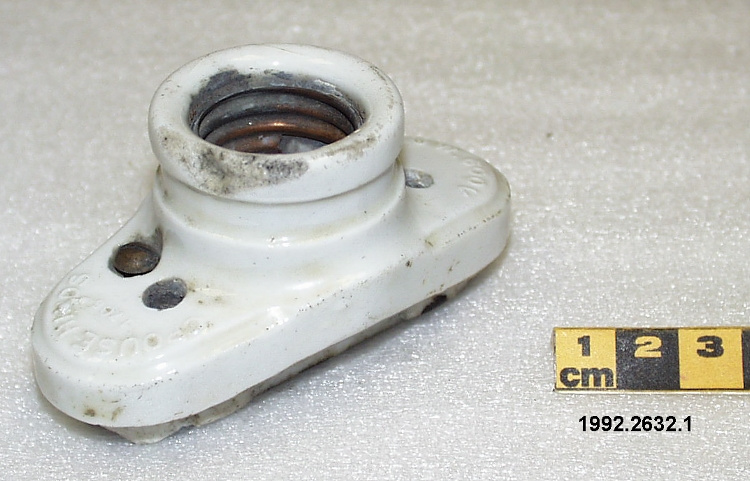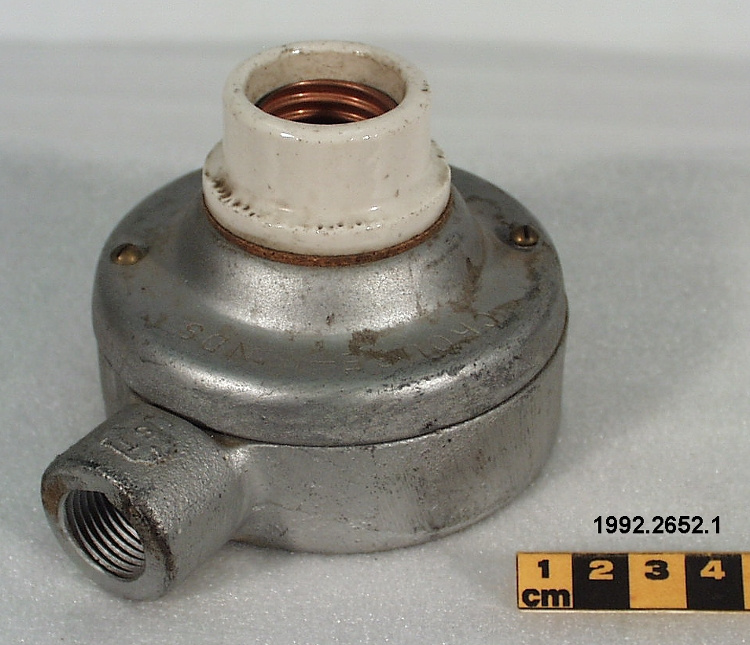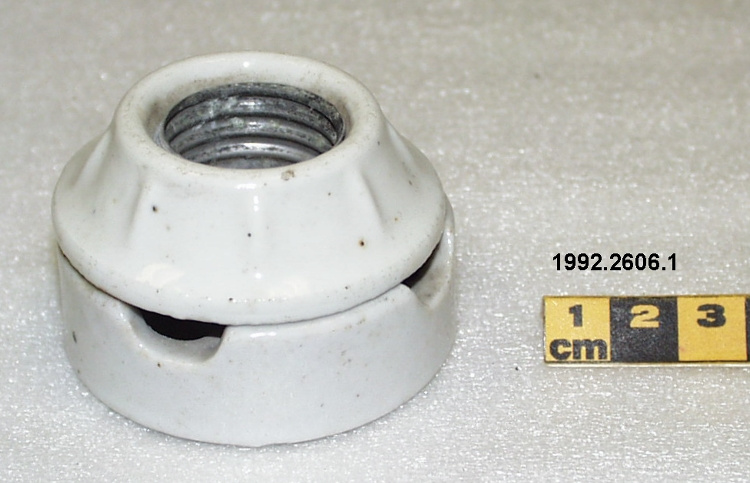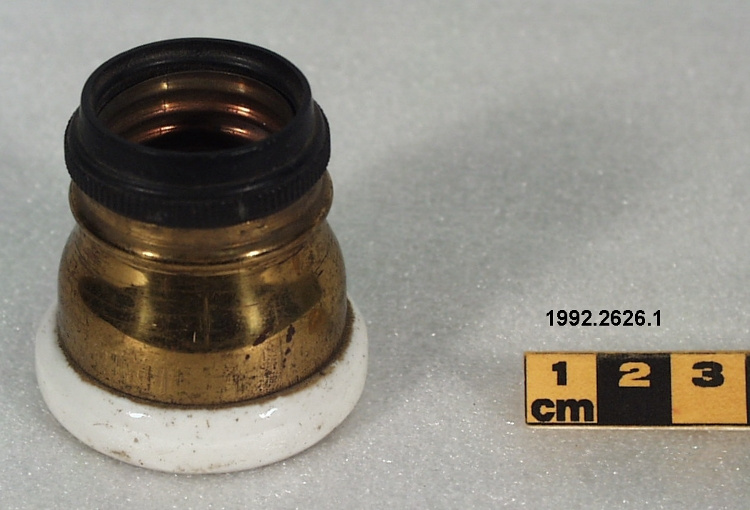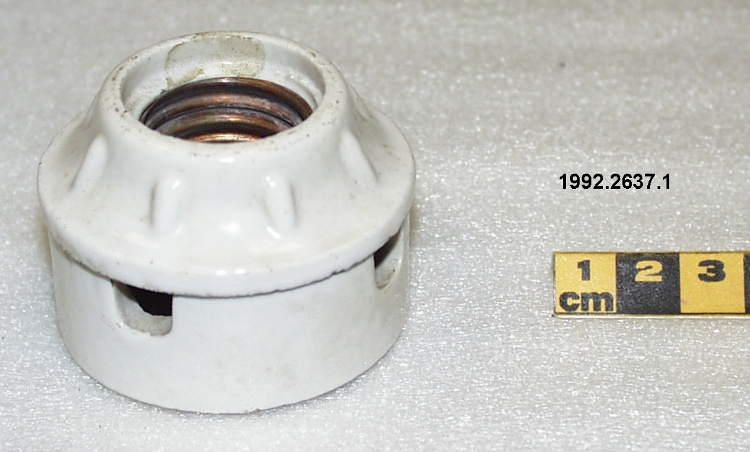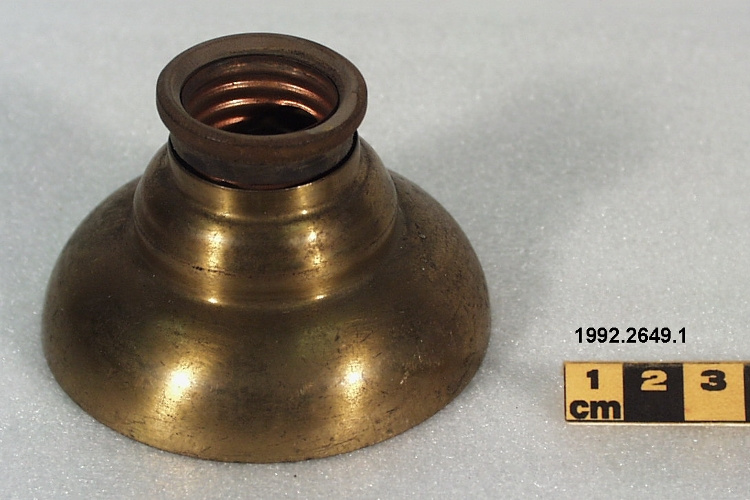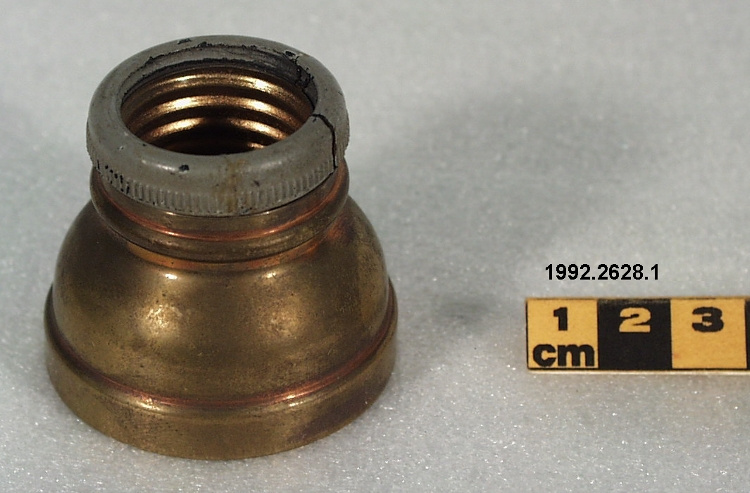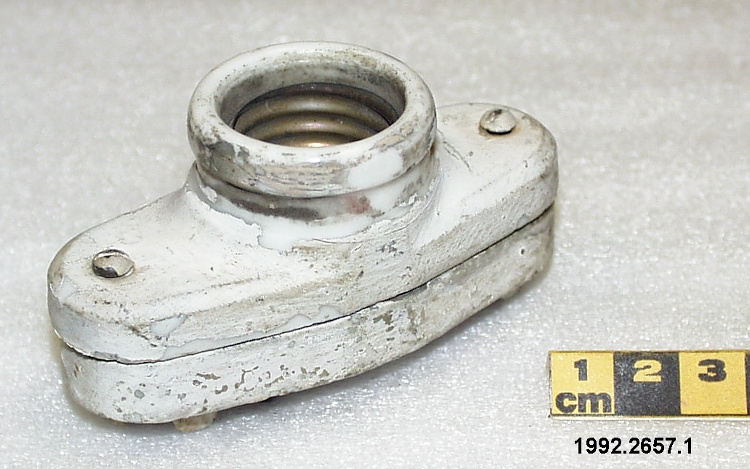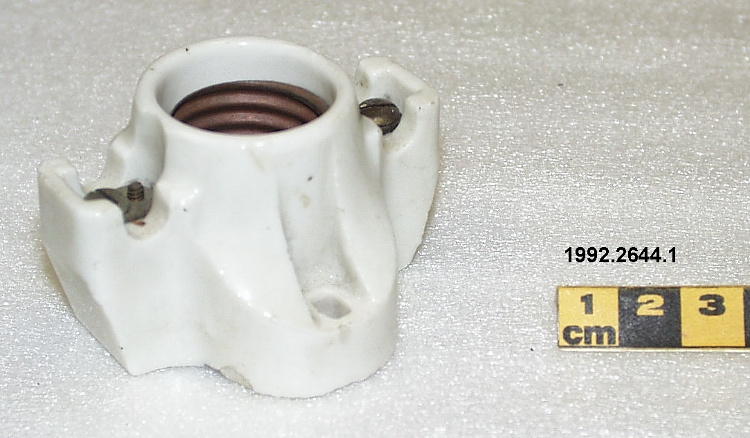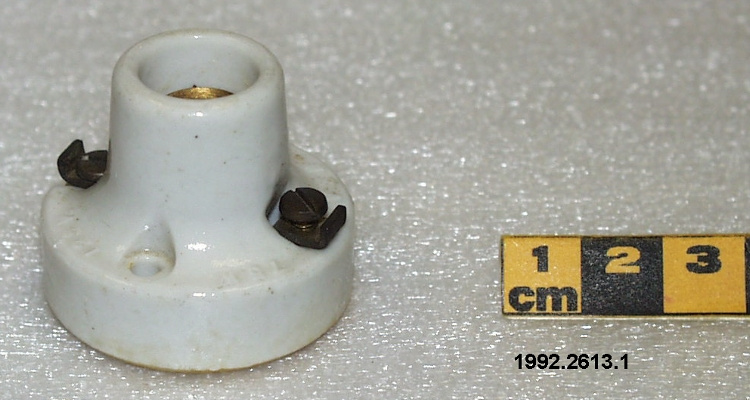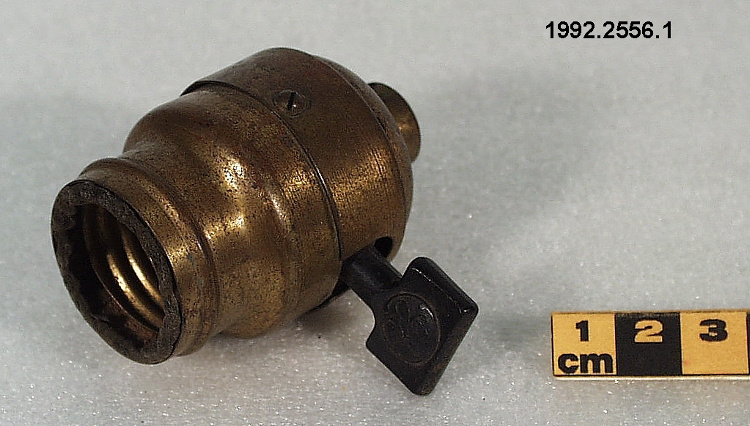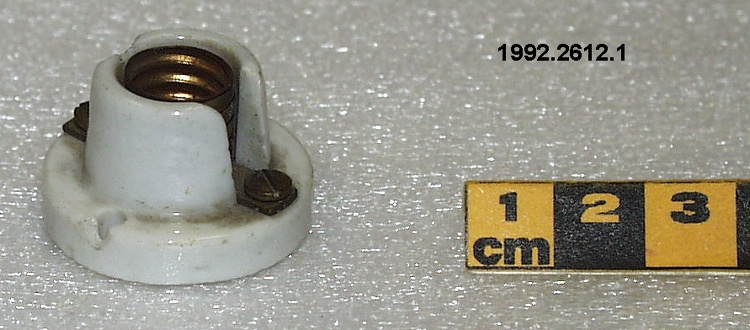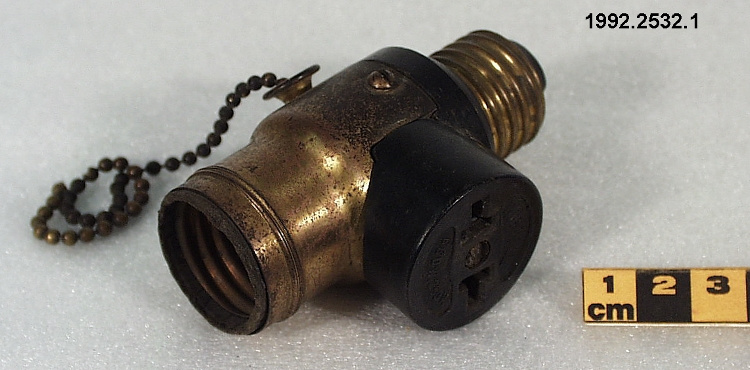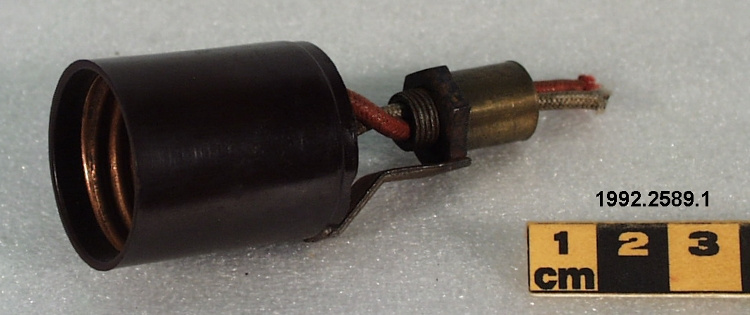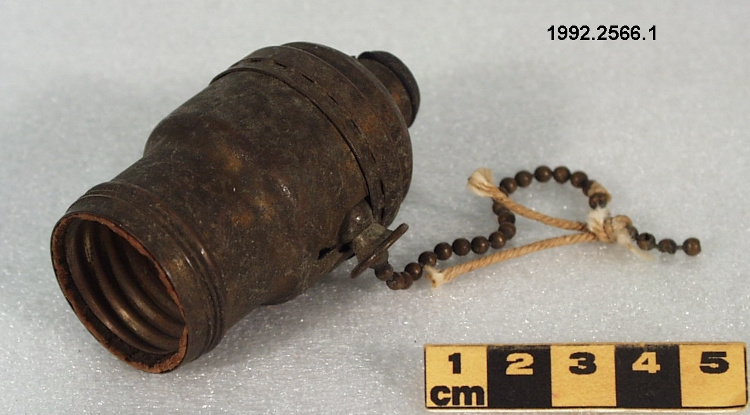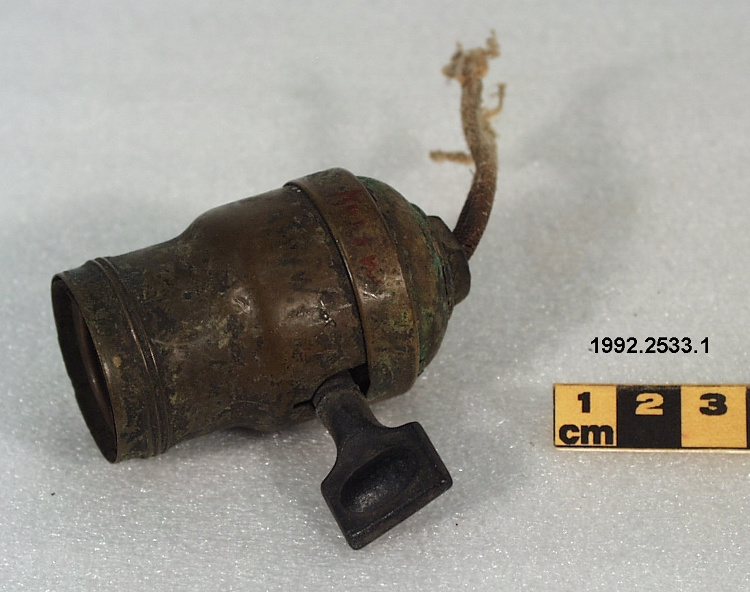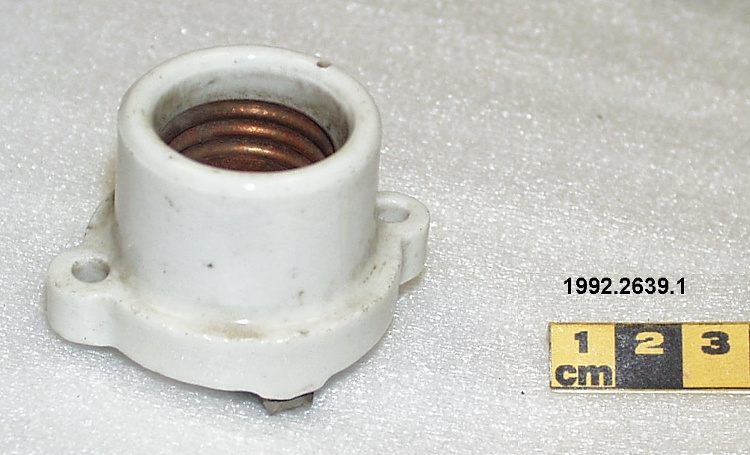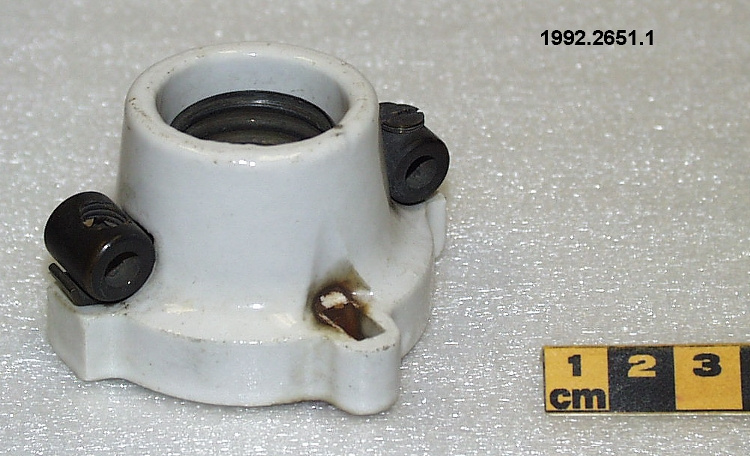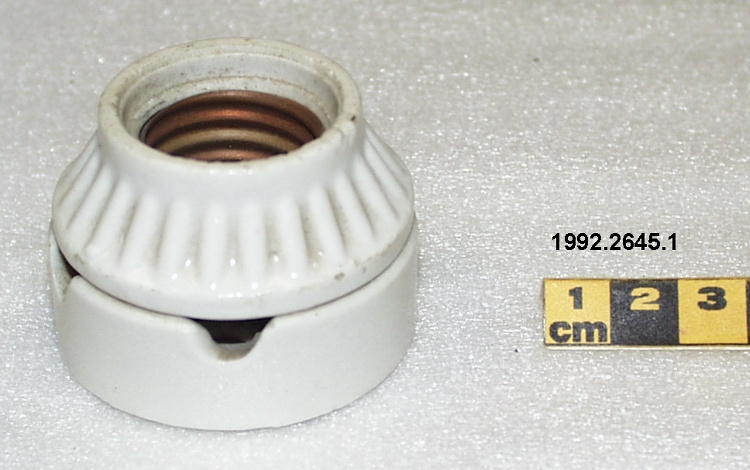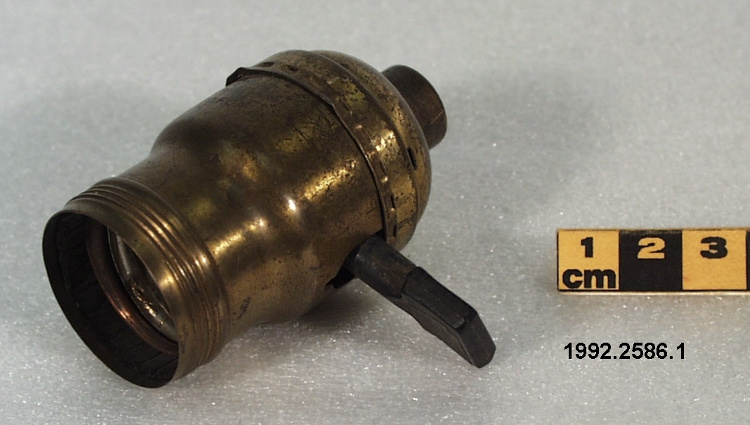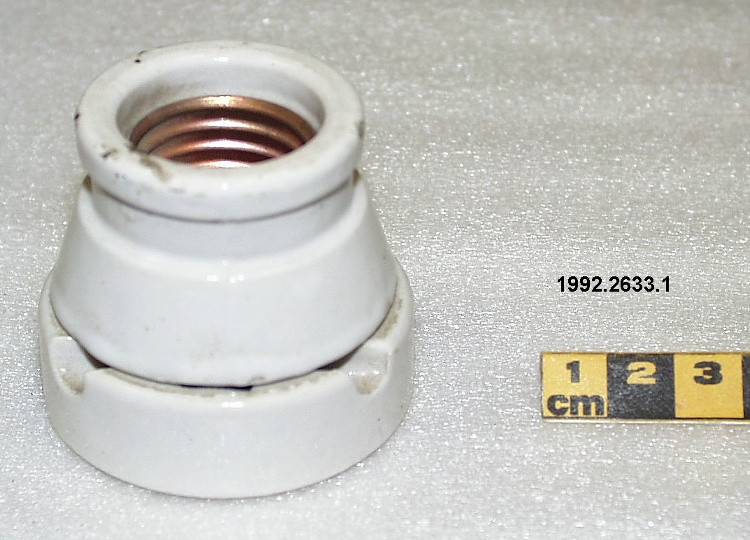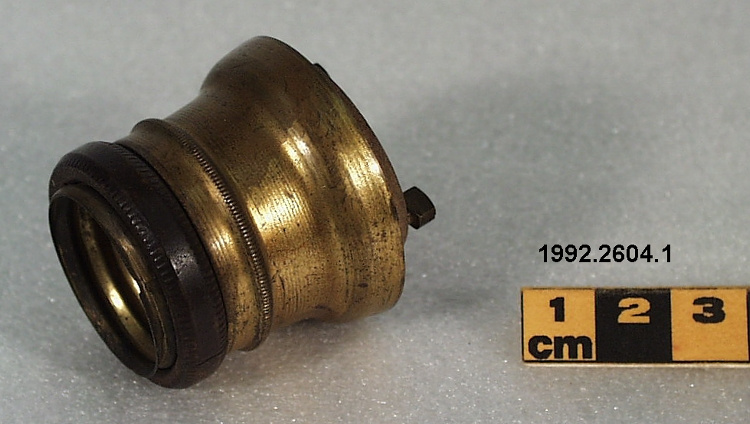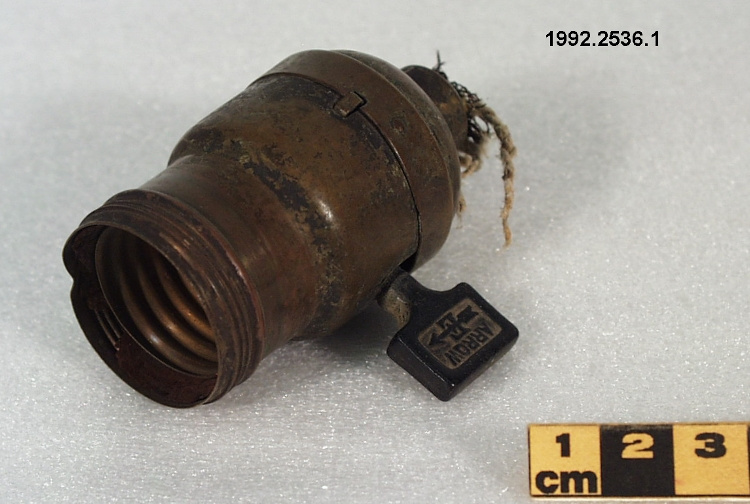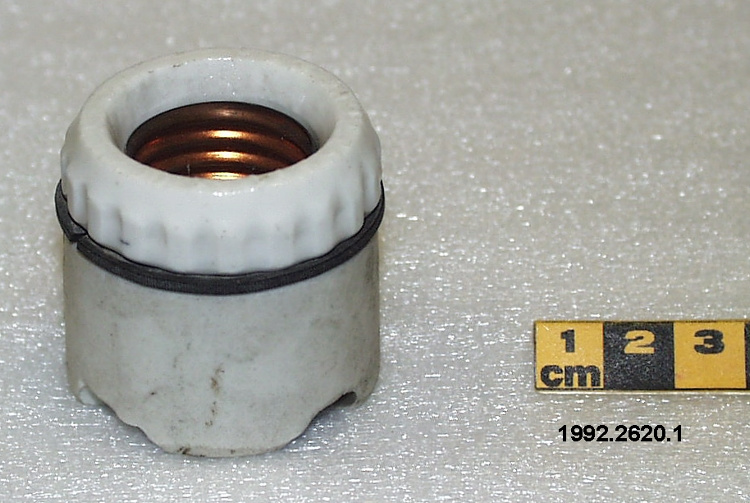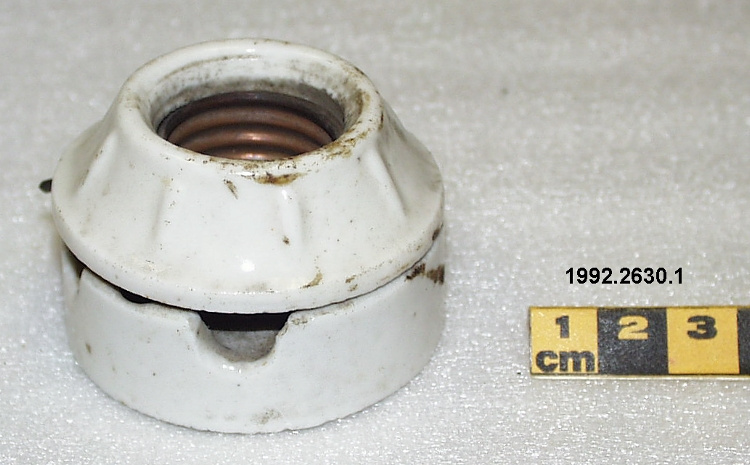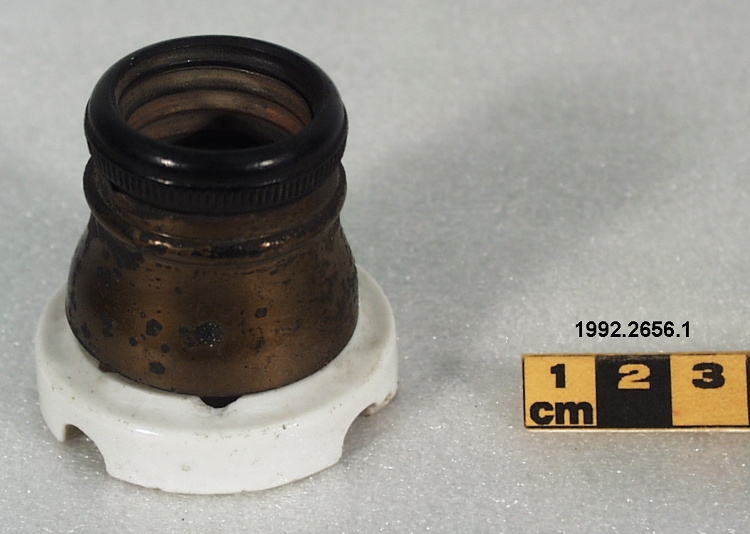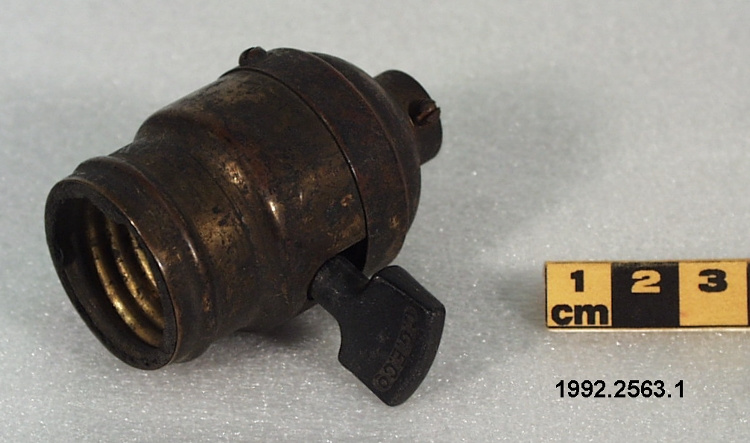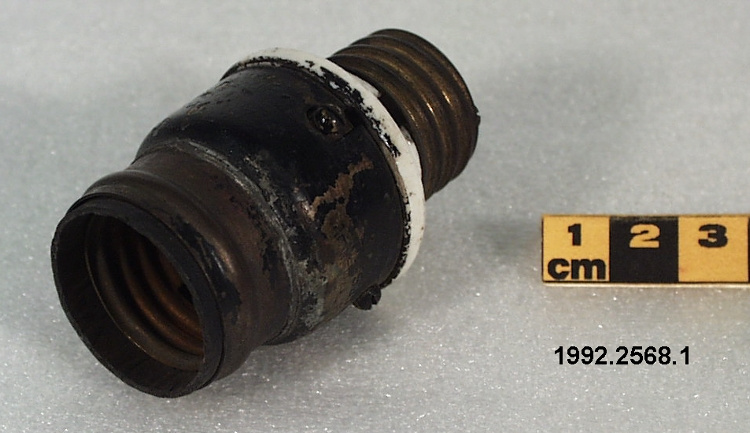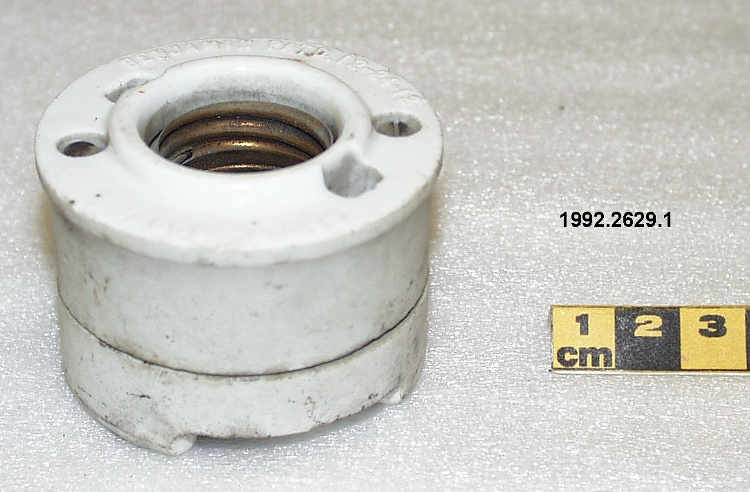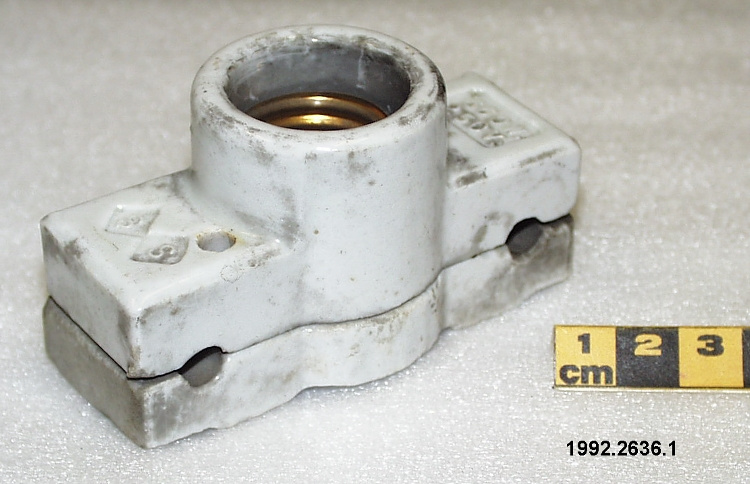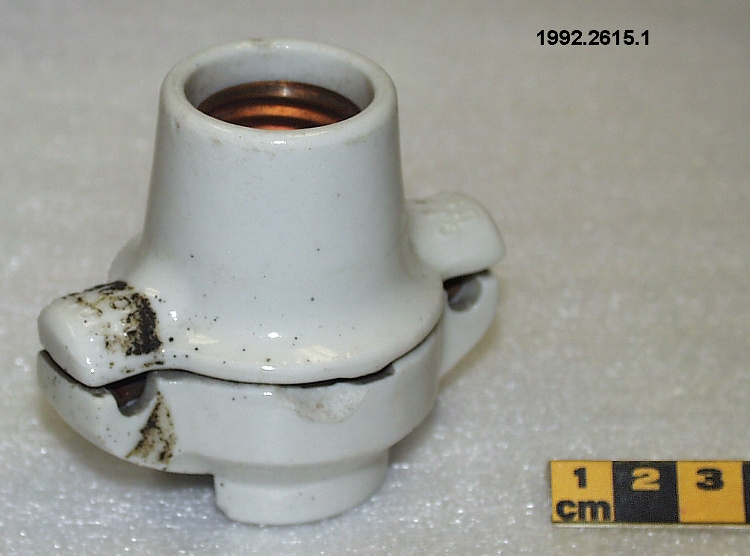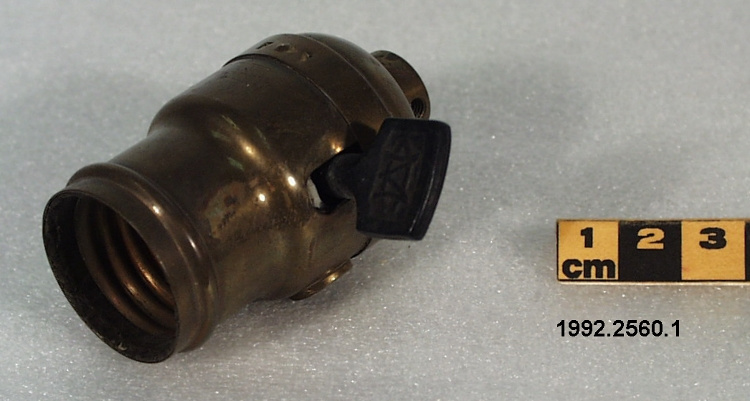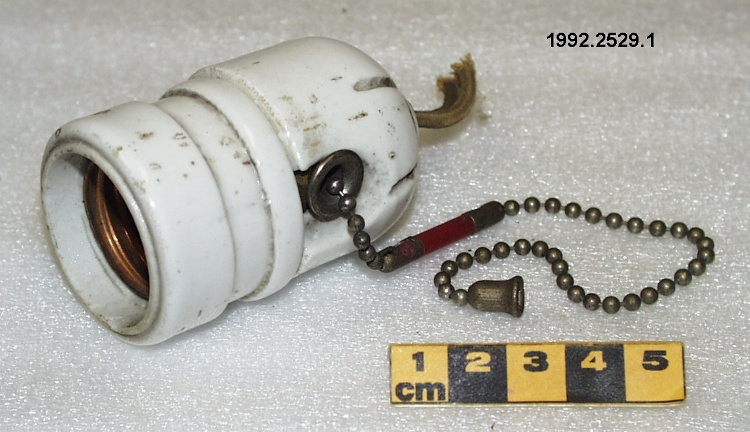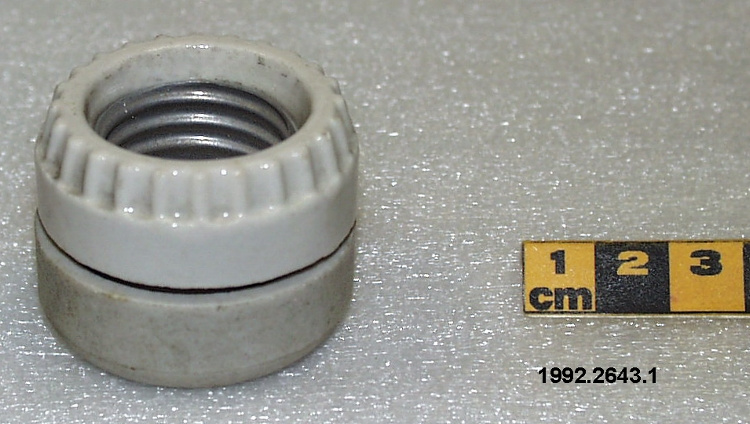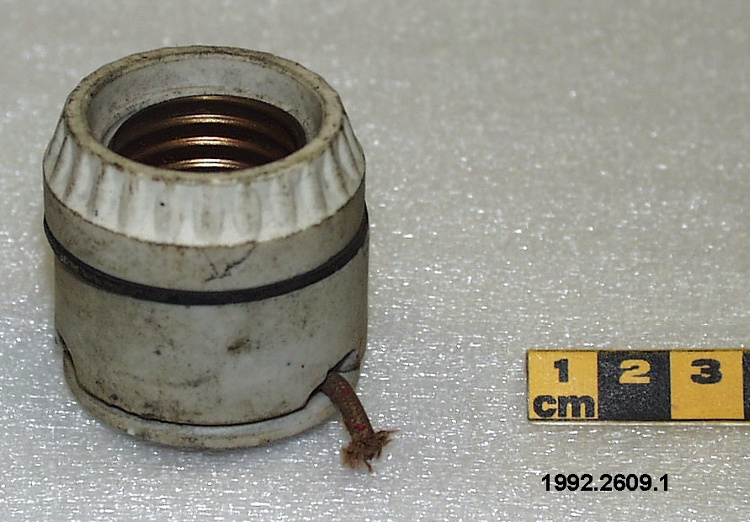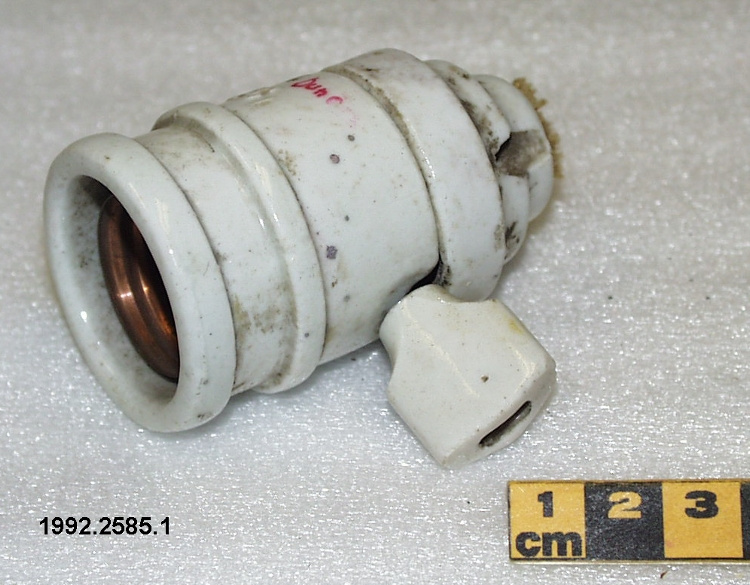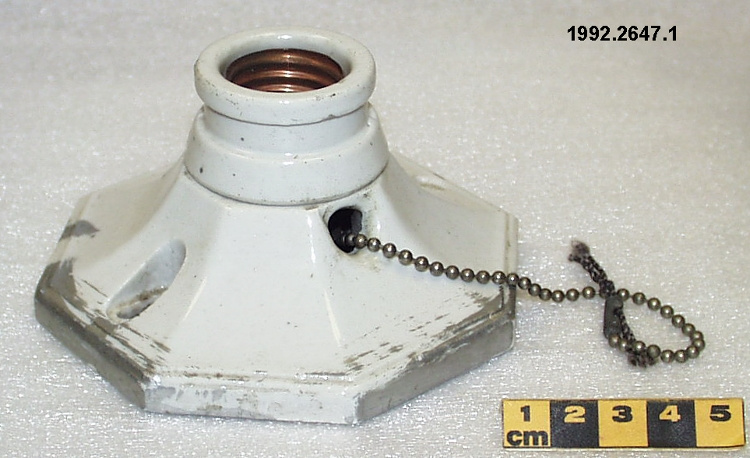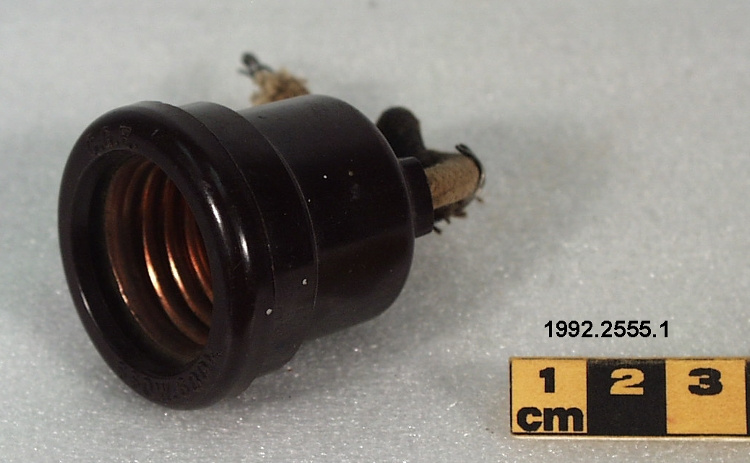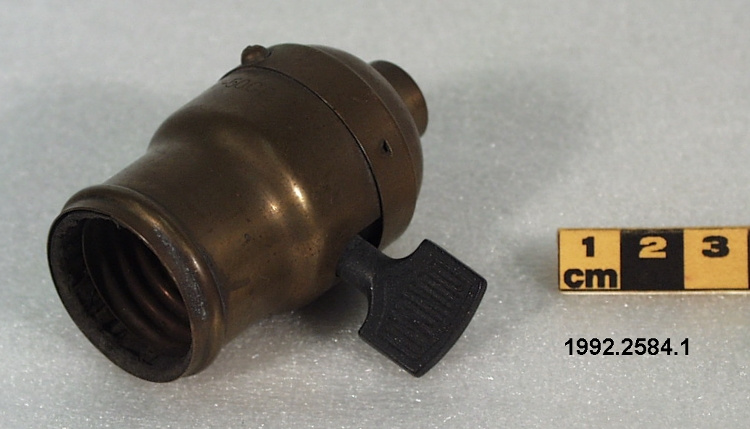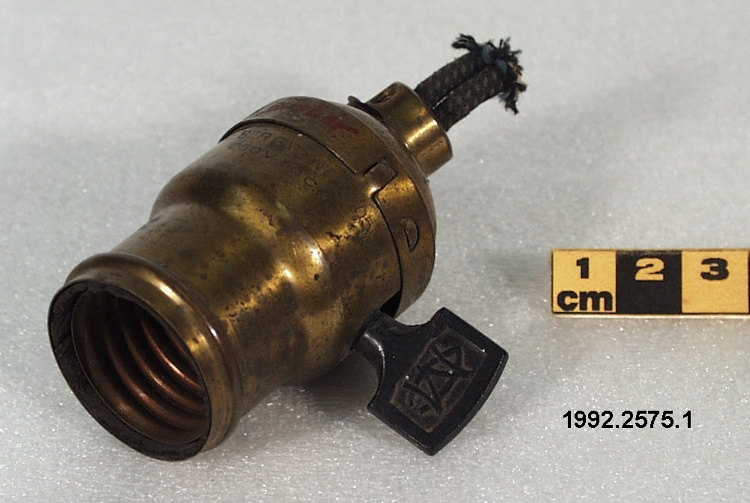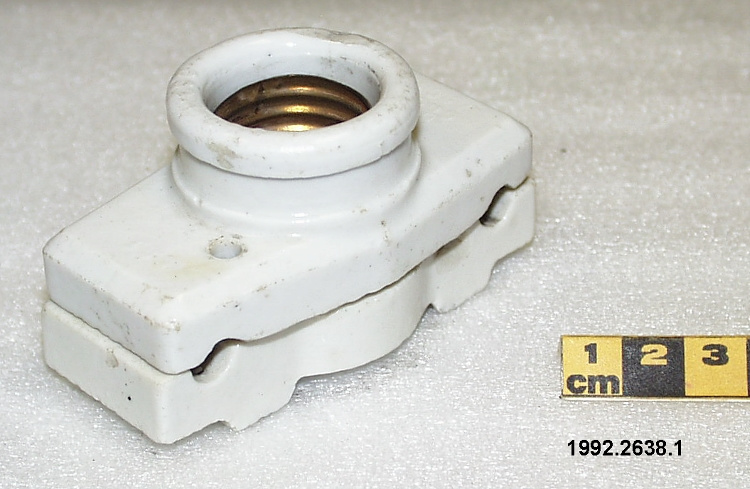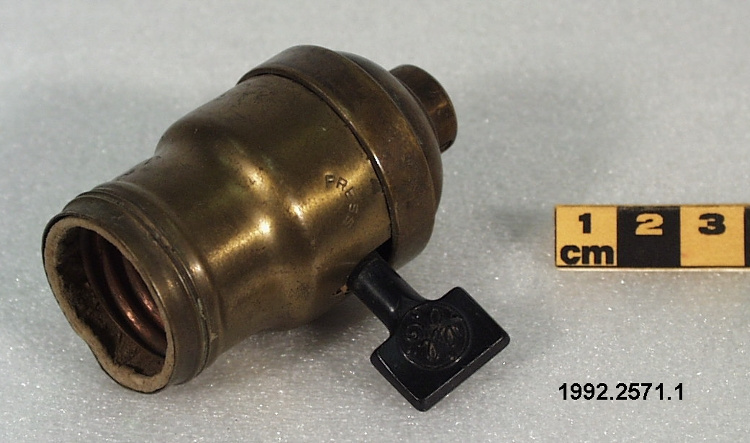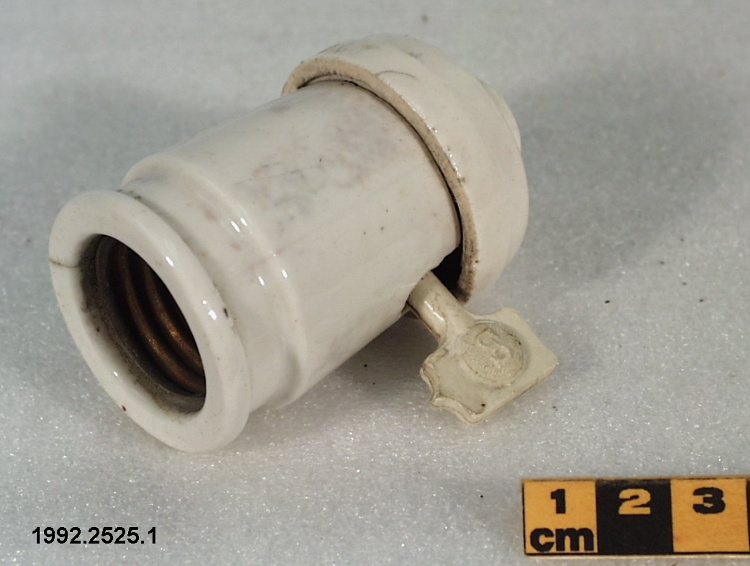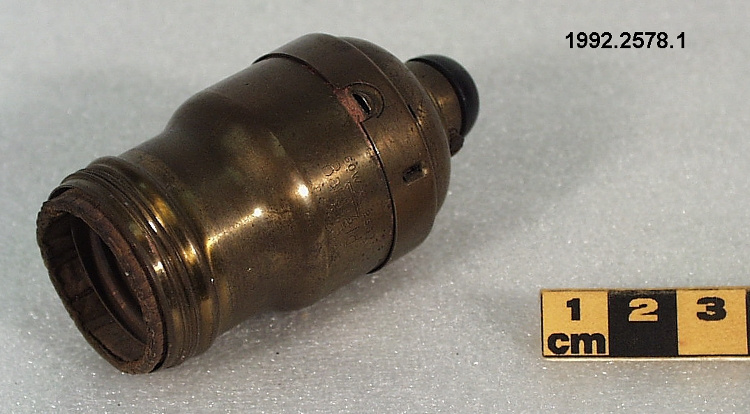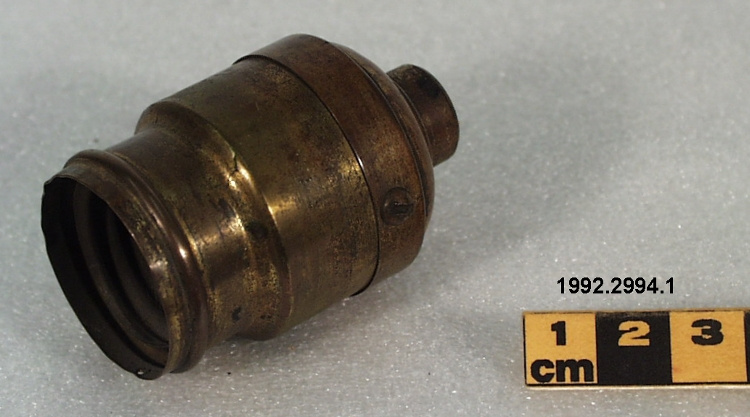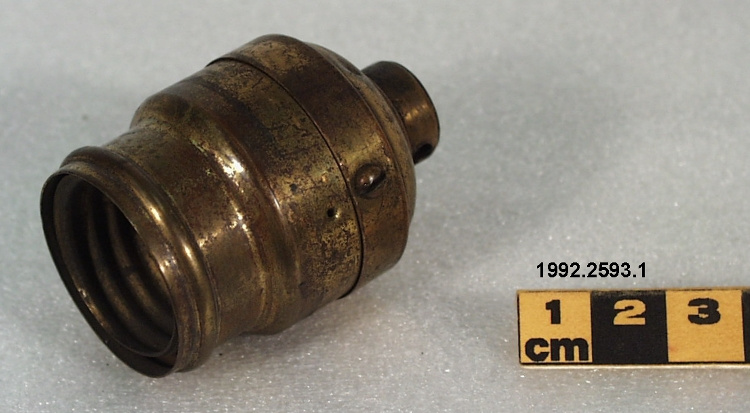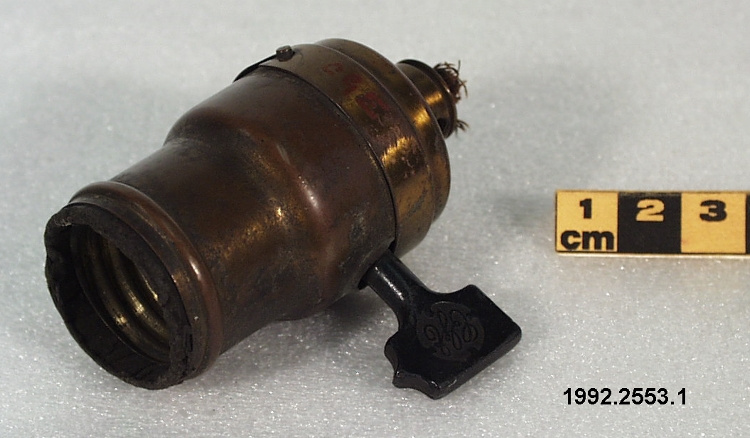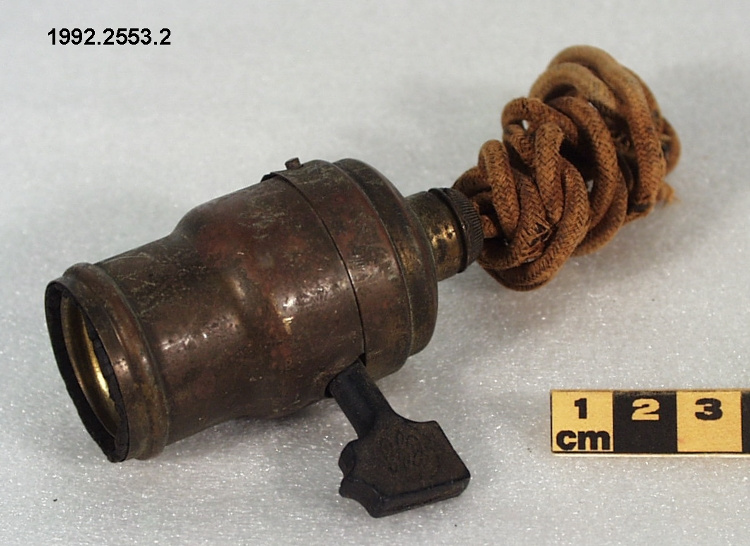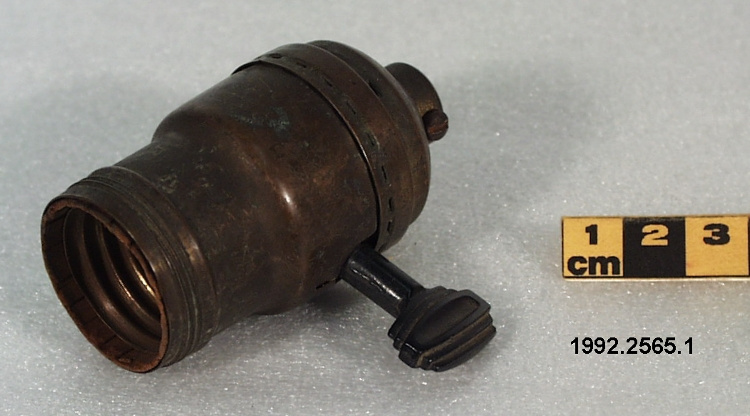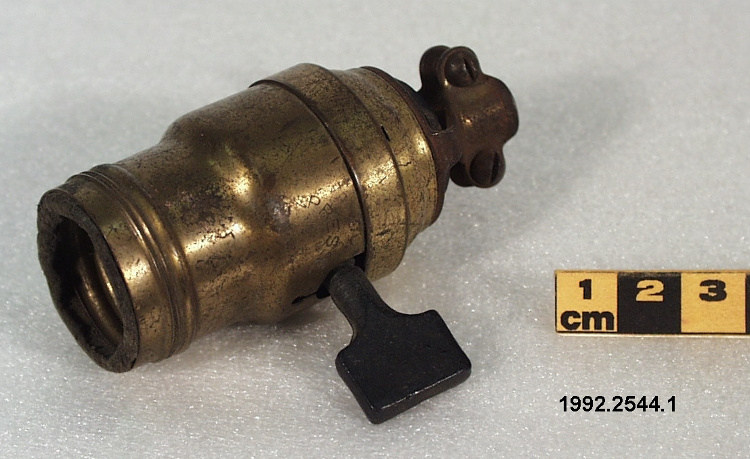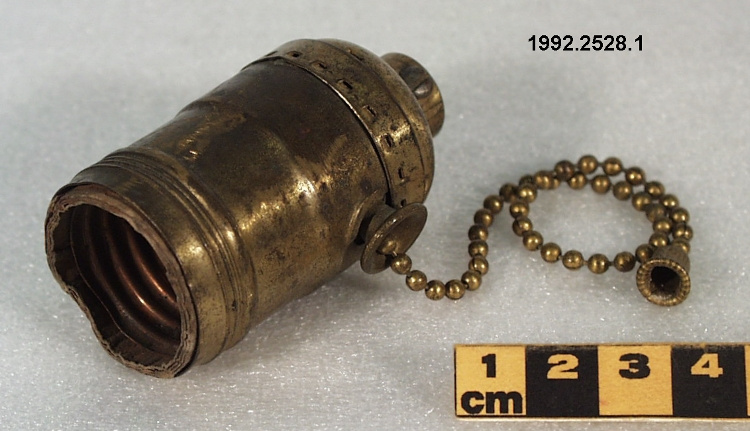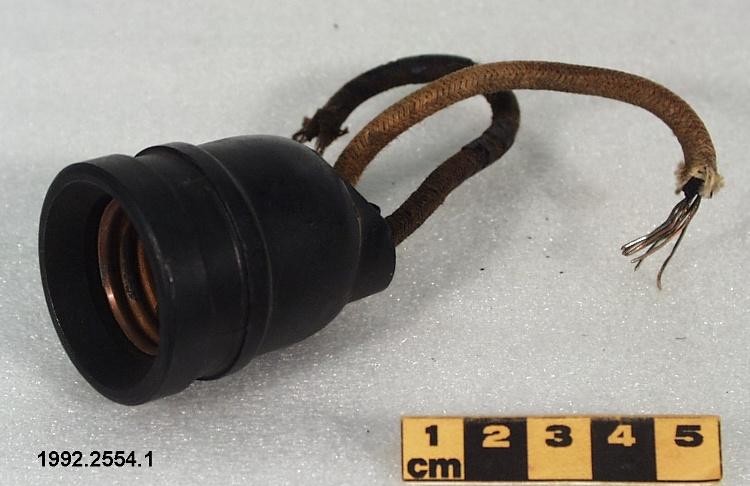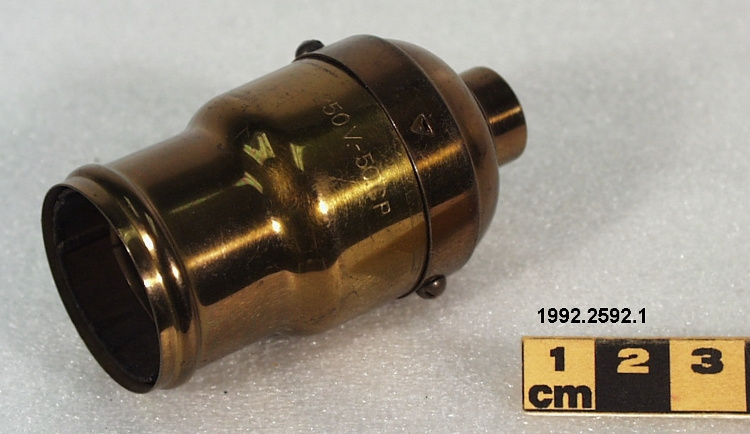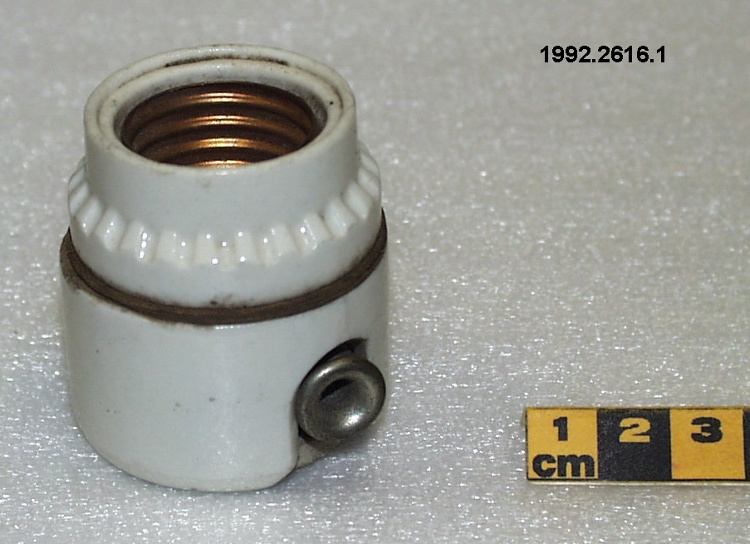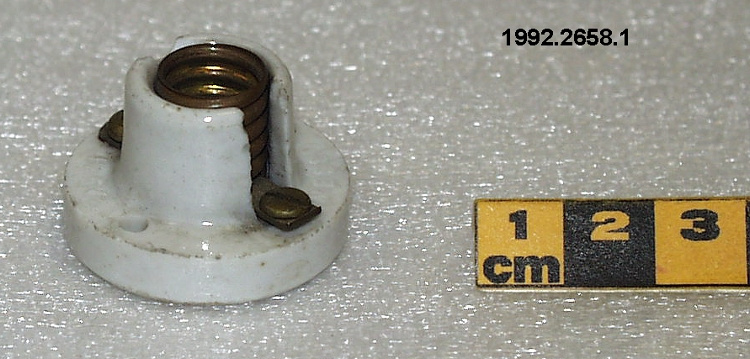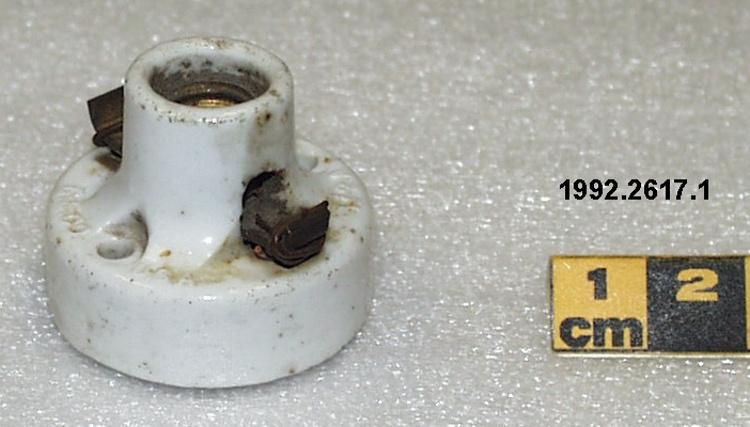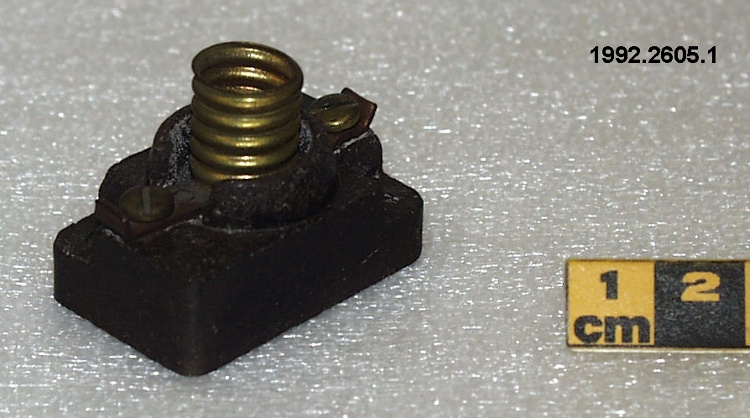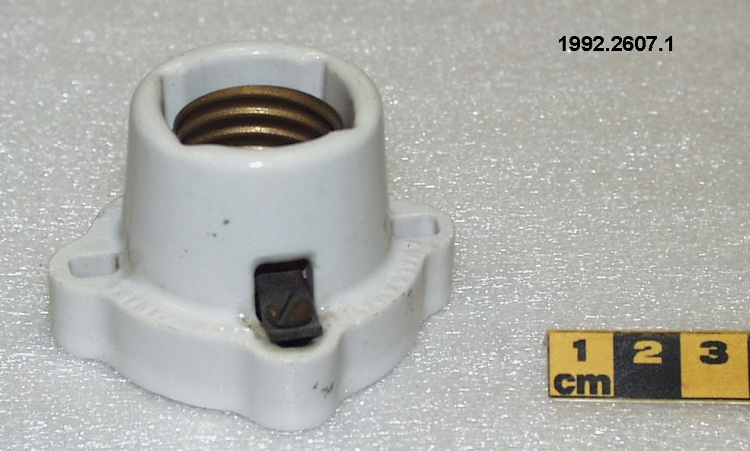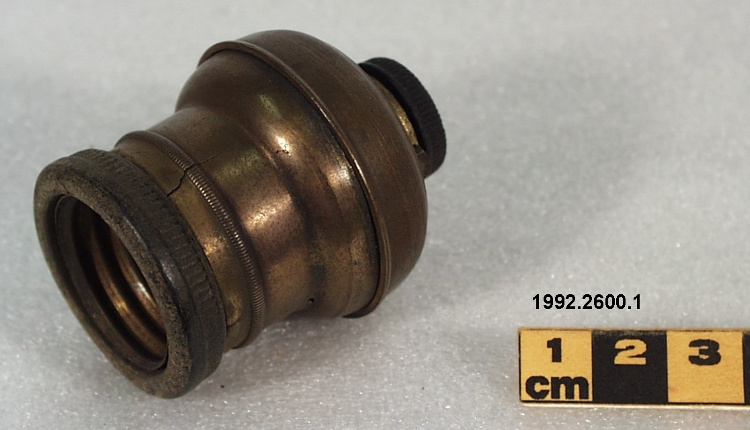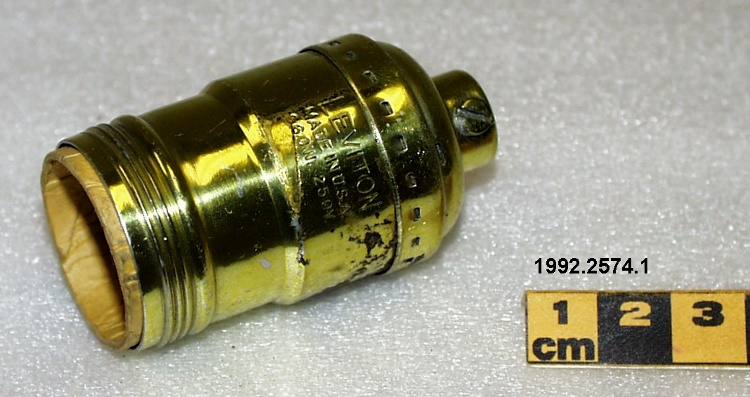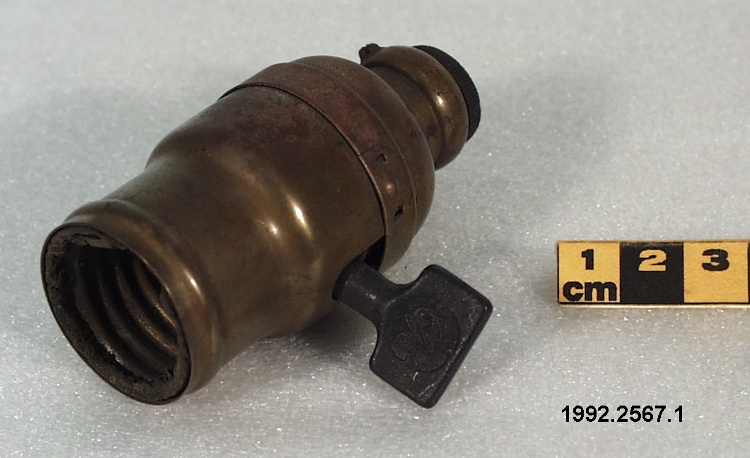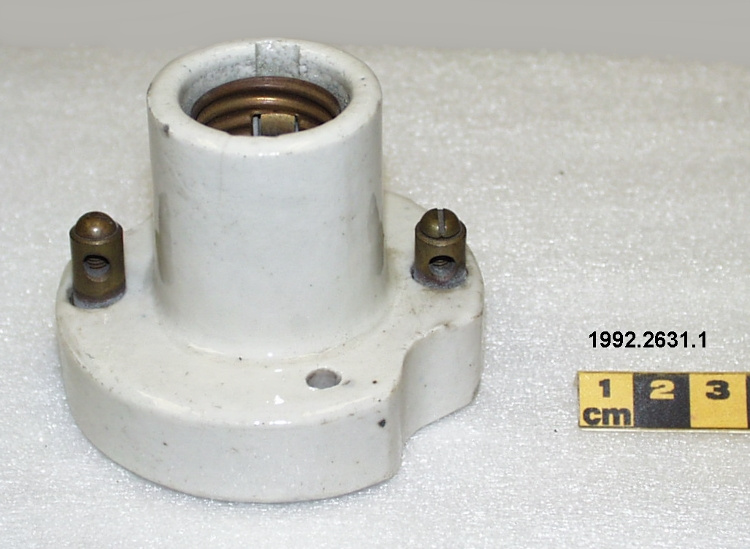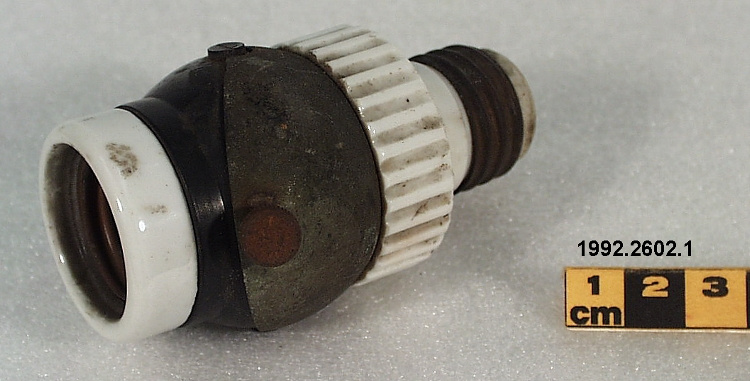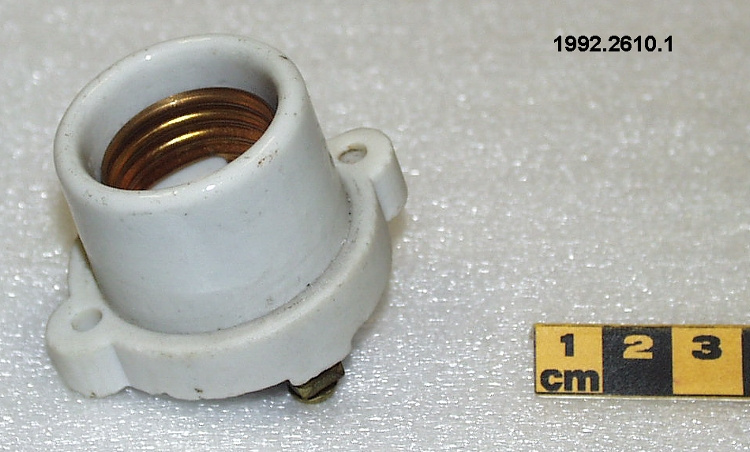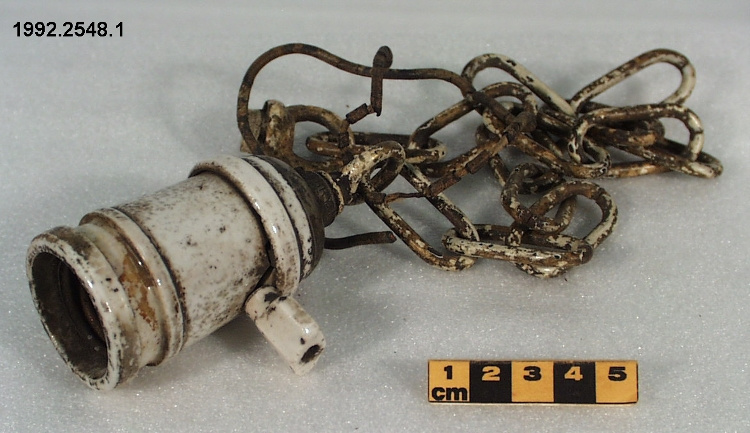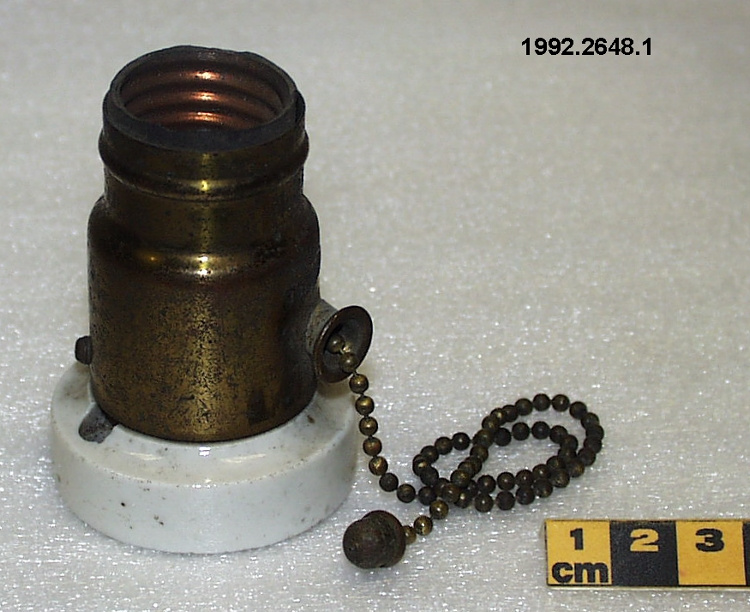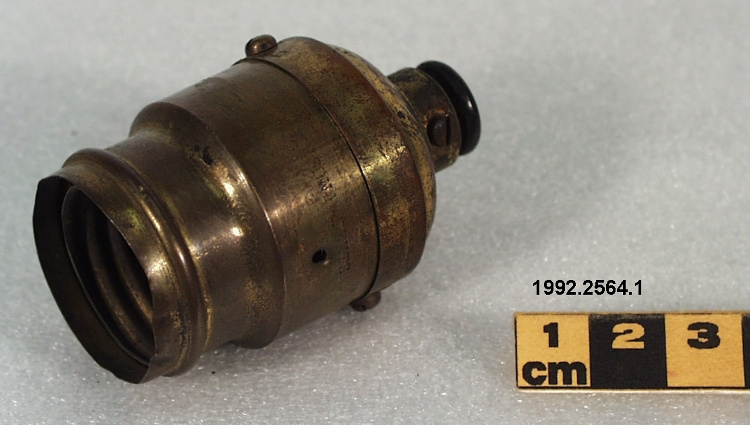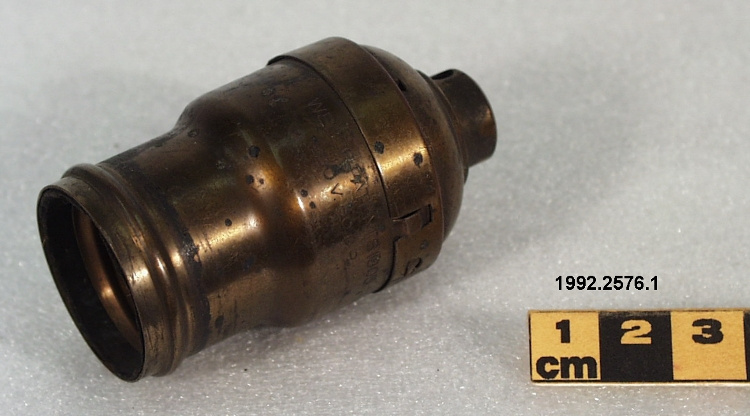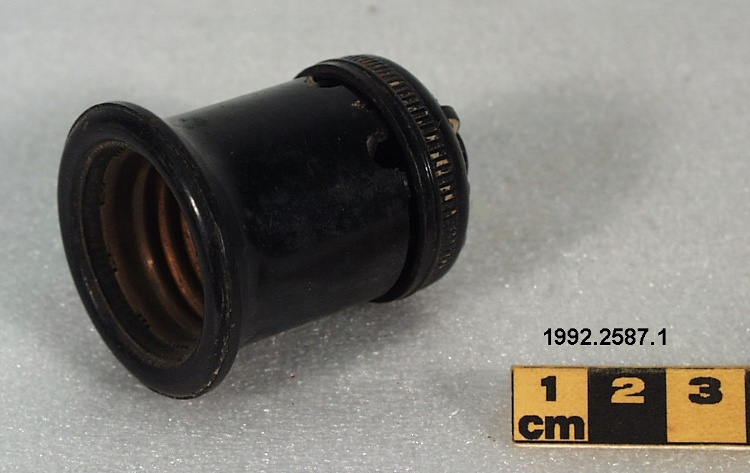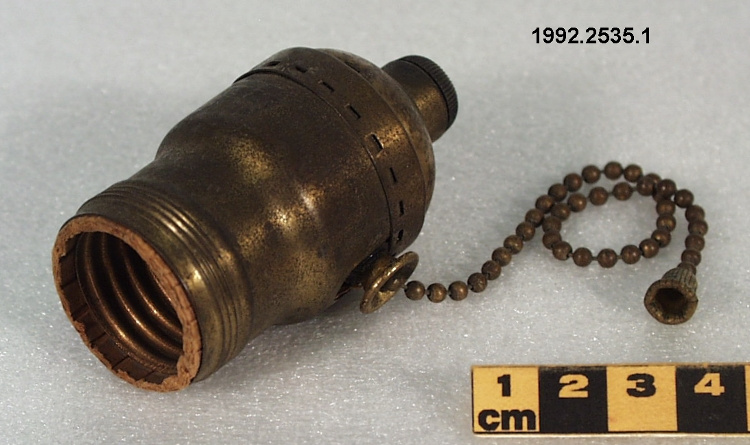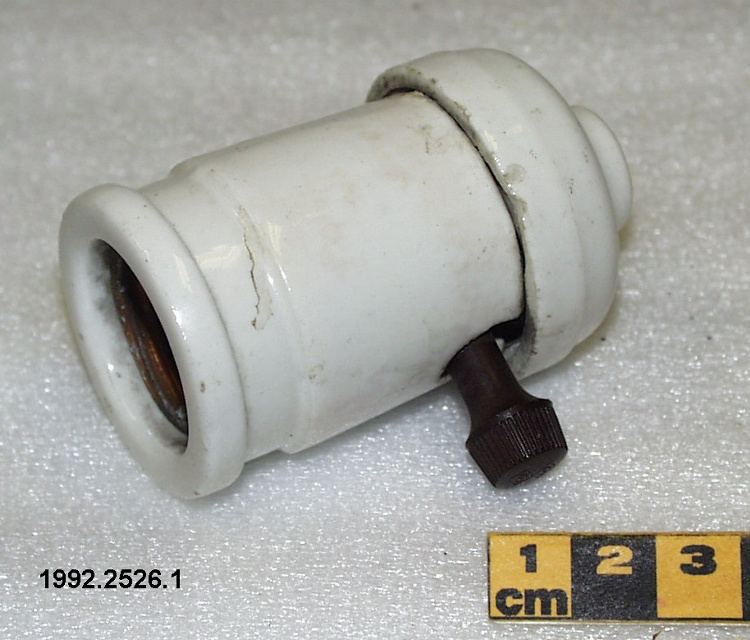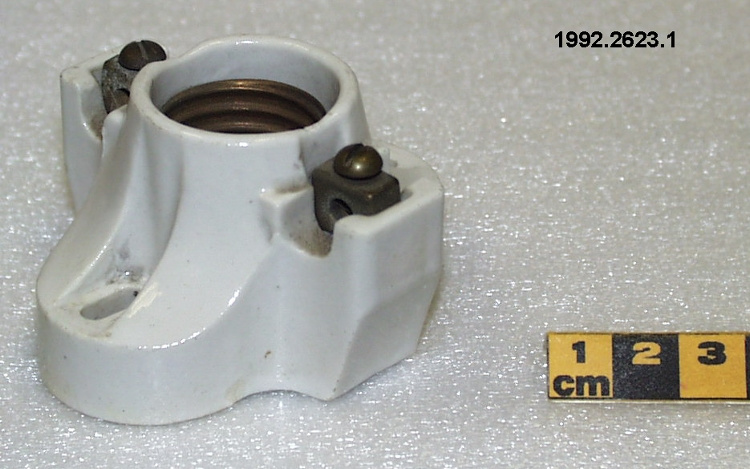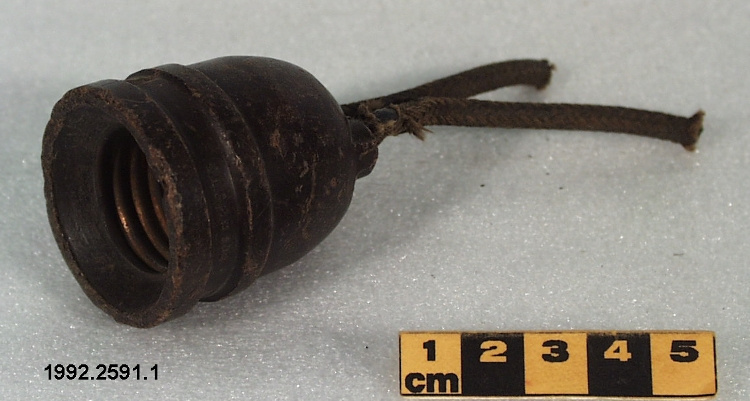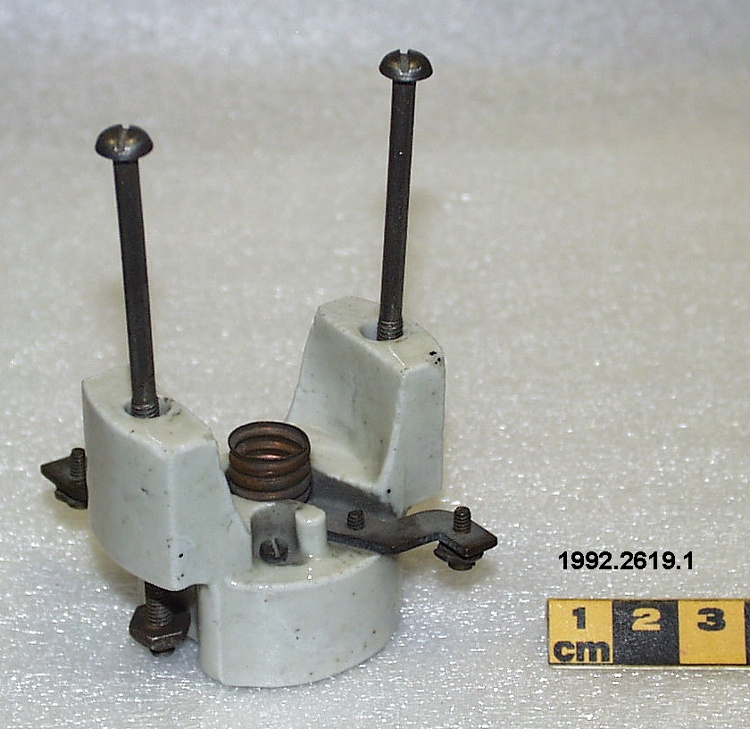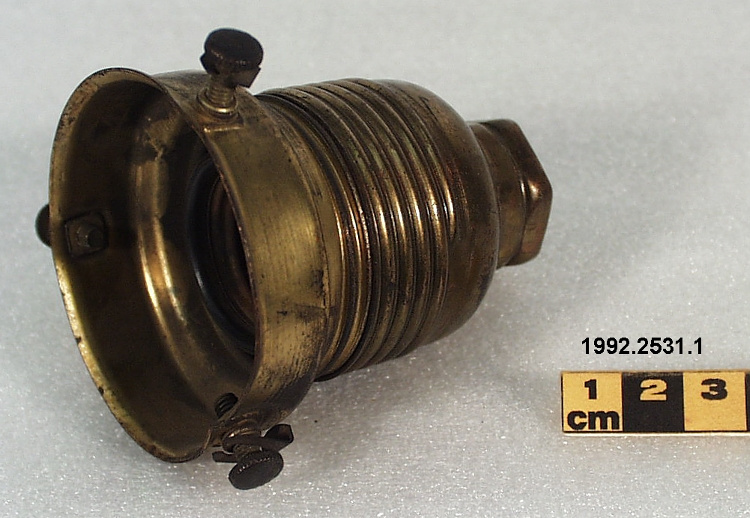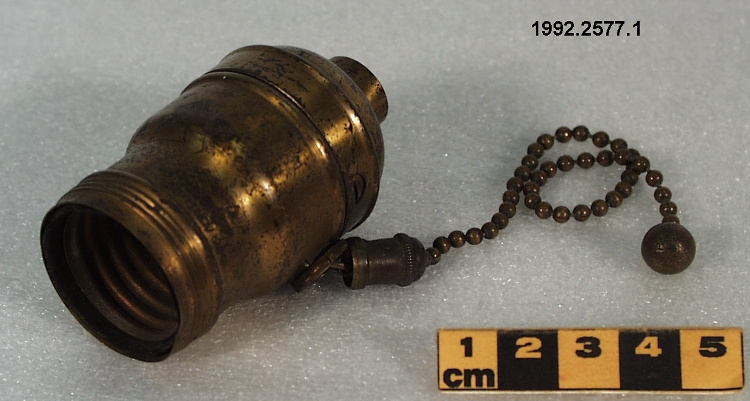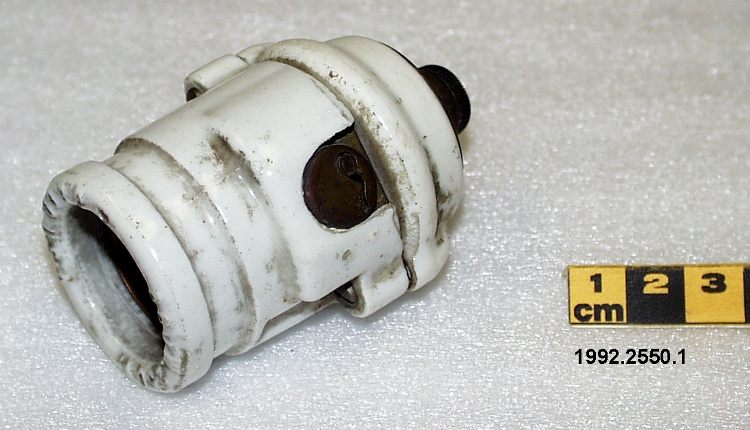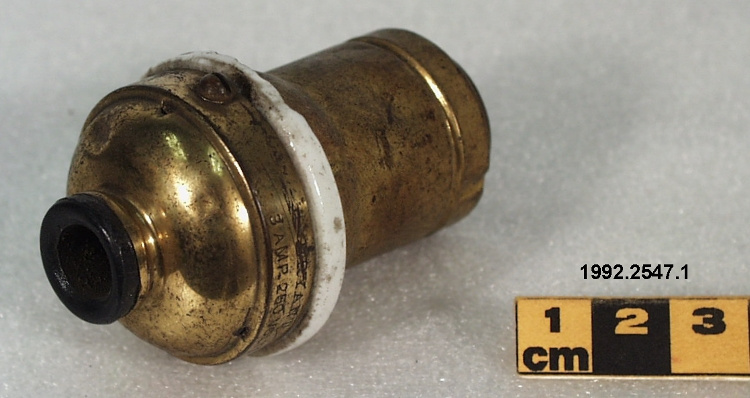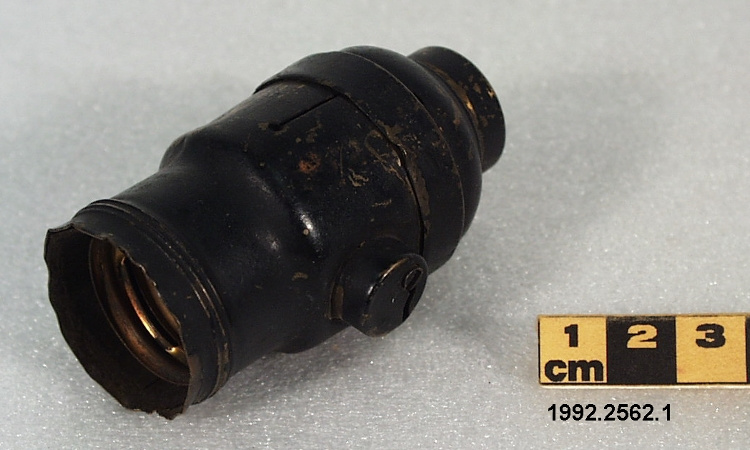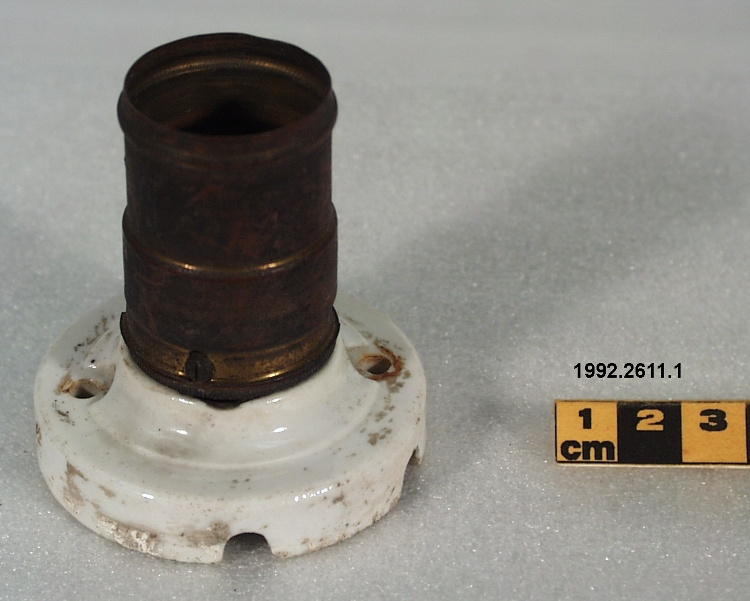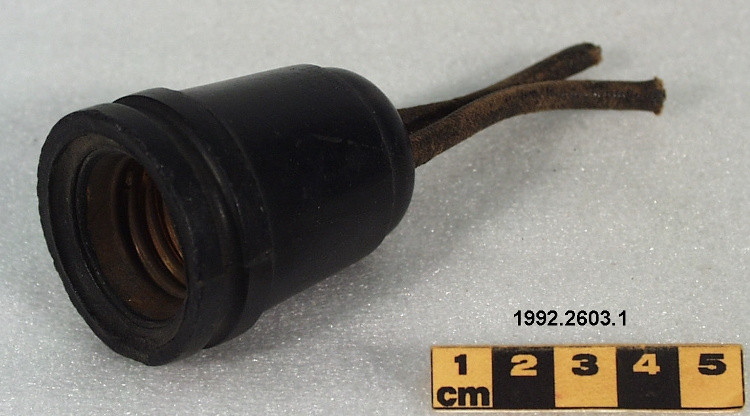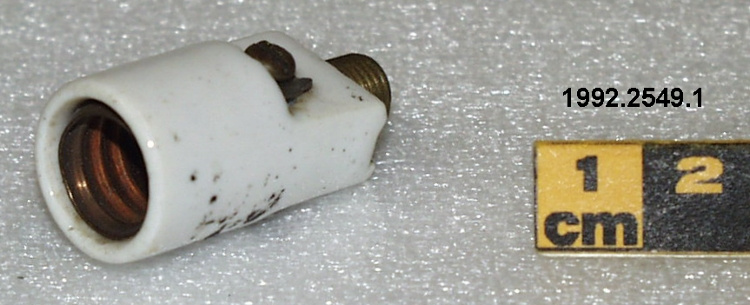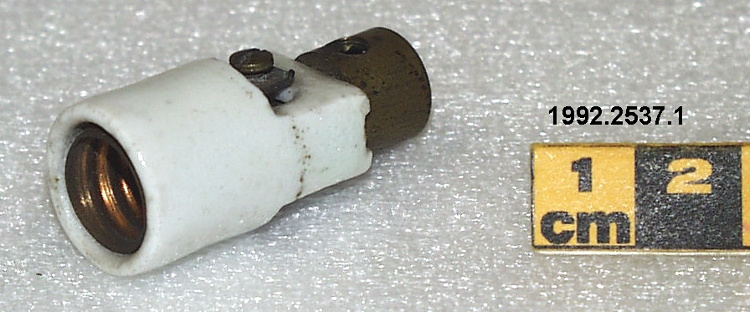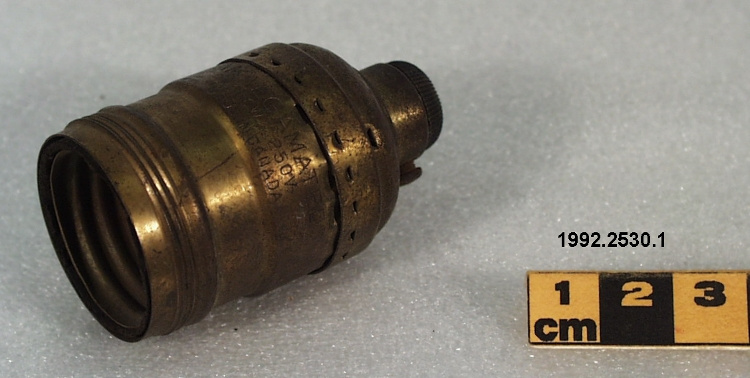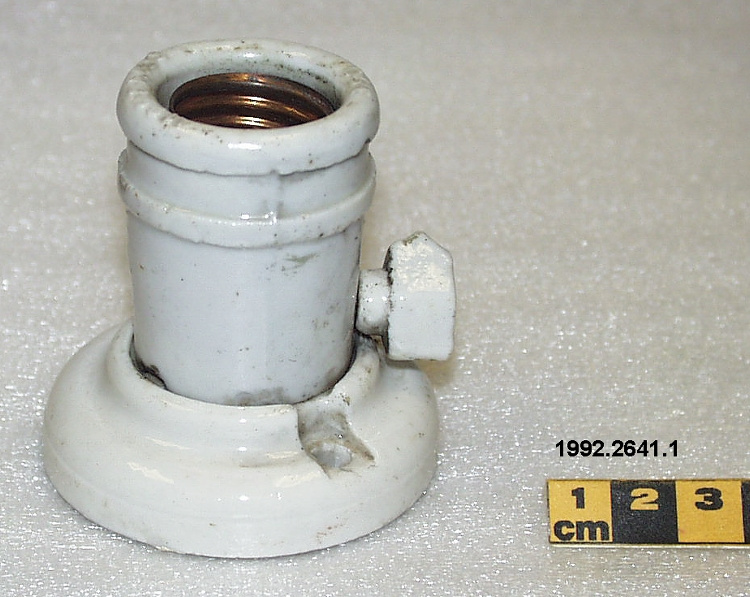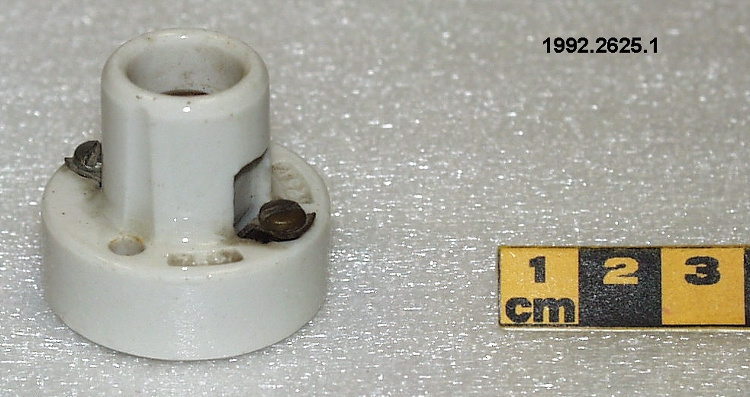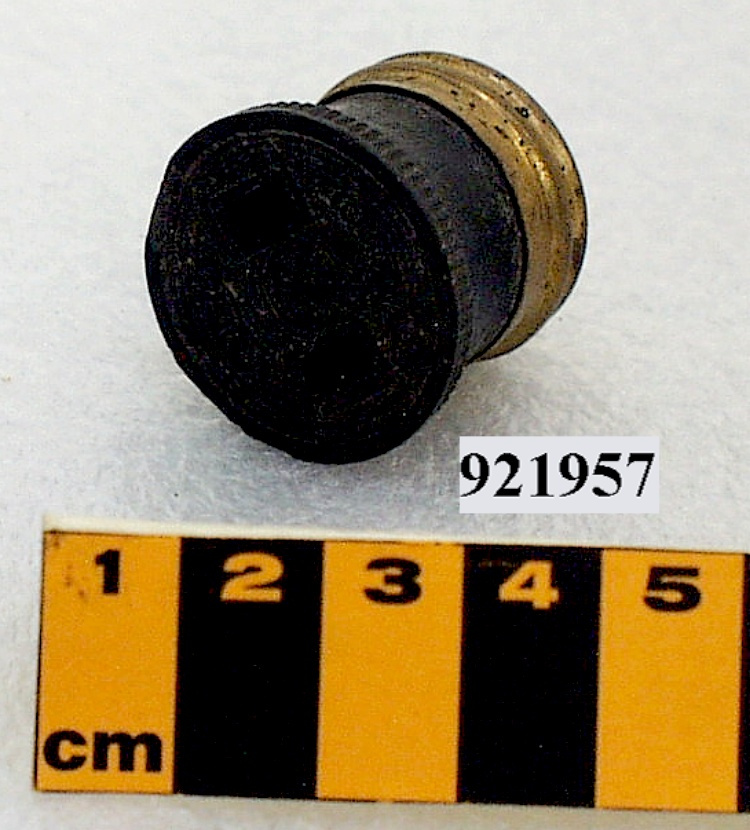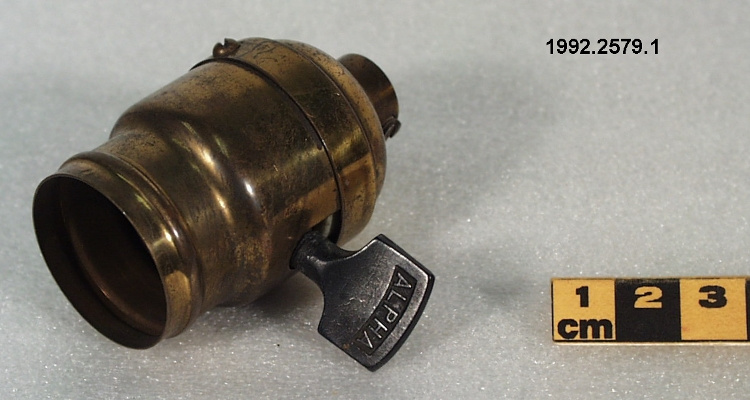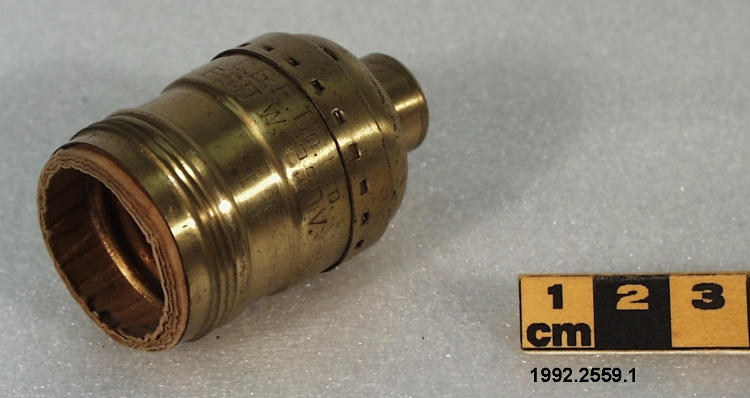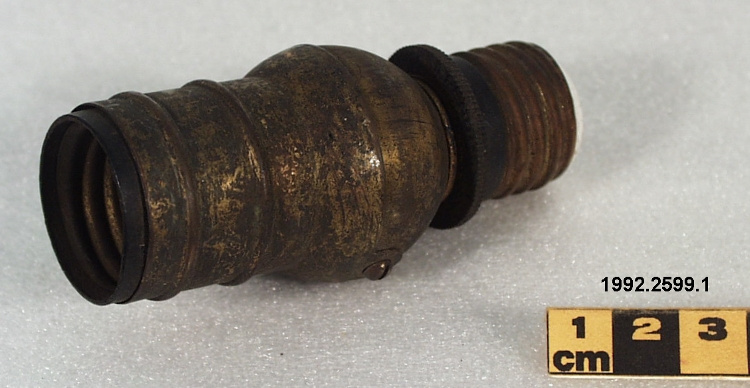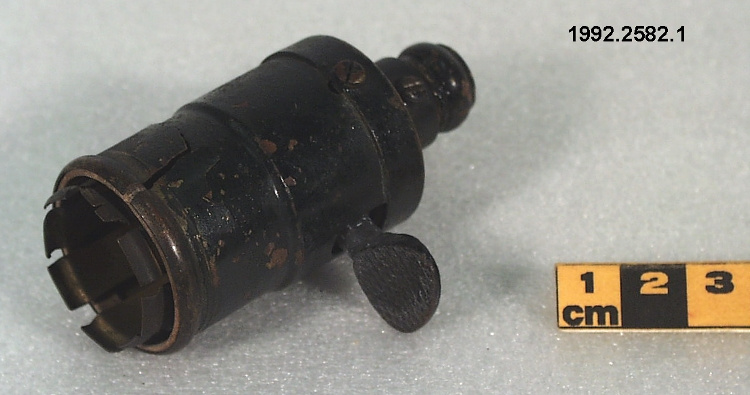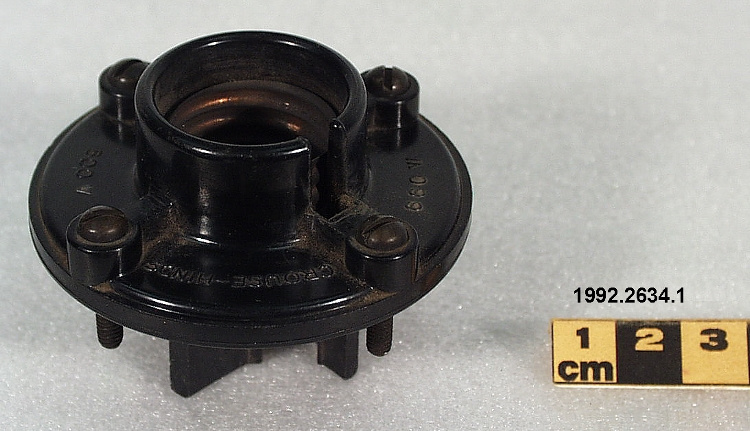Prise de courant
Utiliser cette image
Puis-je réutiliser cette image sans autorisation? Oui
Les images sur le portail de la collection d’Ingenium ont la licence Creative Commons suivante :
Copyright Ingenium / CC BY-NC-ND (Attribution-NonCommercial 4.0 International (CC BY-NC 4.0)
ATTRIBUER CETTE IMAGE
Ingenium,
1992.2634.001
Permalien:
Ingenium diffuse cette image sous le cadre de licence Creative Commons et encourage son téléchargement et sa réutilisation à des fins non commerciales. Veuillez mentionner Ingenium et citer le numéro de l’artefact.
TÉLÉCHARGER L’IMAGEACHETER CETTE IMAGE
Cette image peut être utilisée gratuitement pour des fins non commerciales.
Pour un usage commercial, veuillez consulter nos frais de reproduction et communiquer avec nous pour acheter l’image.
- TYPE D’OBJET
- screw/flush/condulet
- DATE
- 1925–1938
- NUMÉRO DE L’ARTEFACT
- 1992.2634.001
- FABRICANT
- Crouse-Hinds
- MODÈLE
- CF574
- EMPLACEMENT
- Inconnu
Plus d’information
Renseignements généraux
- Nº de série
- S/O
- Nº de partie
- 1
- Nombre total de parties
- 1
- Ou
- S/O
- Brevets
- S/O
- Description générale
- synthetic shell/ copper/ brass
Dimensions
Remarque : Cette information reflète la taille générale pour l’entreposage et ne représente pas nécessairement les véritables dimensions de l’objet.
- Longueur
- S/O
- Largeur
- S/O
- Hauteur
- 4,8 cm
- Épaisseur
- S/O
- Poids
- S/O
- Diamètre
- 7,0 cm
- Volume
- S/O
Lexique
- Groupe
- Énergie-électrique
- Catégorie
- Site d'utilisateur
- Sous-catégorie
- S/O
Fabricant
- Ou
- Crouse Hinds
- Pays
- Inconnu
- État/province
- Inconnu
- Ville
- Inconnu
Contexte
- Pays
- Amérique du Nord
- État/province
- Inconnu
- Période
- 2nd quarter of 20th century
- Canada
-
An example of a receptacle of a type used in Canada. Part of a large & varied collection of over 7500 electrical items acquired & documented by Ontario Hydro in the 1960s. The collection was thought to be the largest & most comprehensive of its kind in Canada & was donated to the National Museum of Science & Technology in 1992. - Fonction
-
An electrical wiring device used to provide a point at which power can be drawn from a wiring system by means of a plug . - Technique
-
An example of a receptacle of the 1920s to 1930s. A simple arrangement which did not require the service of a mechanic to change a lamp was a necessity for commercial production of electric lamp sockets & receptacles. In 1880 Edison introduced the screw cap which still bears his name (Ref. 2). Edison had the idea for a light socket while screwing the cap on a kerosene can. It has the advantage of firmly seating the bulb without having to snap, pull or otherwise jar the lamp and its delicate filament. There were rival lamps before 1900, each with its own base, but Edison's base had 70% of the market in the early 1900s (Ref.. 3). The electrical industry was the first to take an interest in the large-scale use of bakelite since it met the enormous demand for insulating material. In the late 1920s, bakelite was used primarily as an insulating material. In the 1920s & 1930s, the electrical industry became a vast consumer of bakelite for plugs, sockets, switches, insulators & accessories (Ref. 4). - Notes sur la région
-
Inconnu
Détails
- Marques
- raised lettering on upper side reads "CROUSE-HINDS", "660 W", "600 V"/ raised lettering on underside reads "CF-574", "NICKEL", GROUND"
- Manque
- appears complete
- Fini
- black synthetic/ metallic parts
- Décoration
- S/O
FAIRE RÉFÉRENCE À CET OBJET
Si vous souhaitez publier de l’information sur cet objet de collection, veuillez indiquer ce qui suit :
Crouse-Hinds, Prise de courant, entre 1925–1938, Numéro de l'artefact 1992.2634, Ingenium - Musées des sciences et de l'innovation du Canada, http://collections.ingeniumcanada.org/fr/id/1992.2634.001/
RÉTROACTION
Envoyer une question ou un commentaire sur cet artefact.
Plus comme ceci
